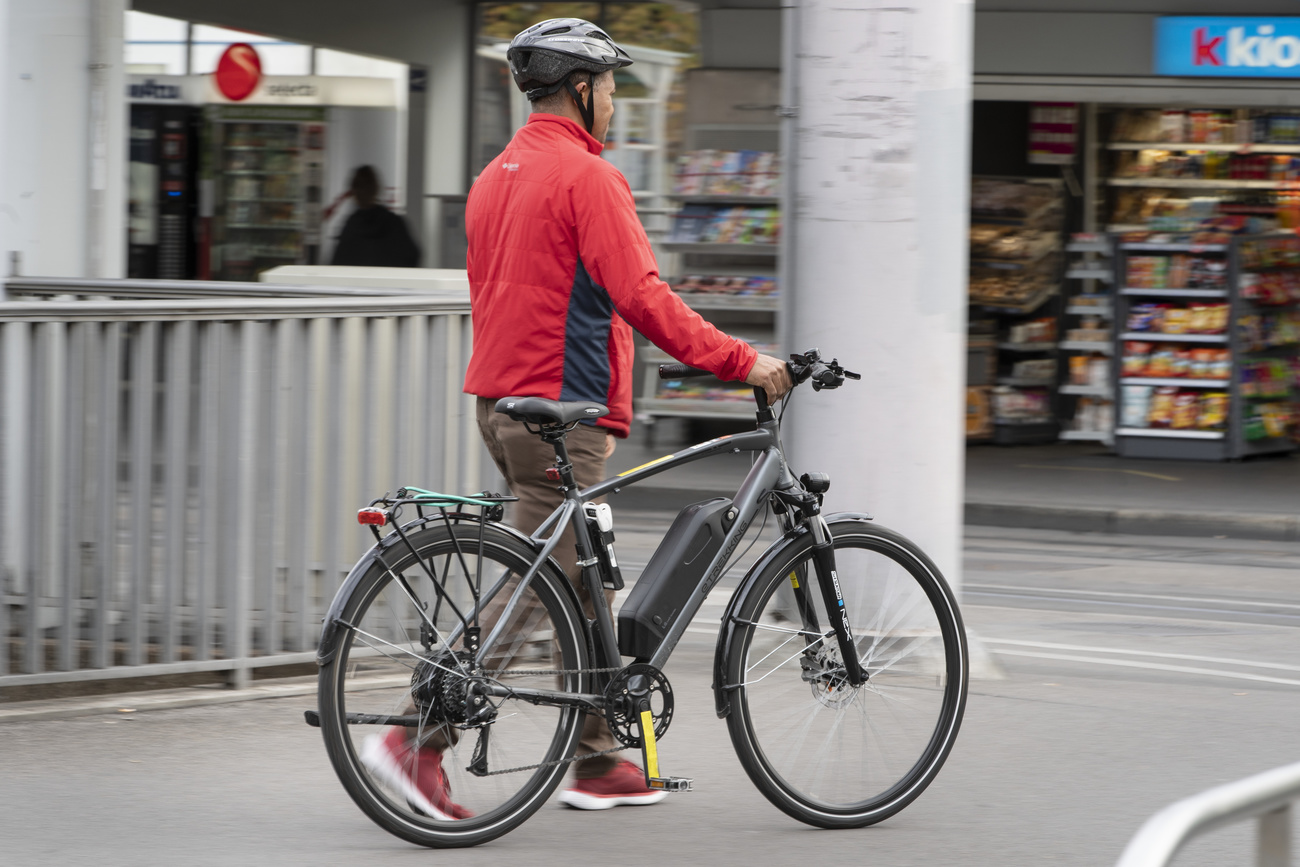
E-bike riders regularly break speed limit in residential areas

Fast e-bikes regularly exceed the speed limit in residential areas. A new study with data on cyclists in Zurich shows they regularly reach speeds of over 30 km/h.
A research team from Swiss Federal Institute of Technology ETH Zurich analysed data from over 17,000 bike rides by 351 cyclists in Zurich for the study. The results were published in the journal Cycling and Micromobility Research. According to the researchers, the results provide a detailed picture of how fast different types of bicycles actually move through the urban space – and where this leads to conflicts with infrastructure and traffic regulations.
+Get the most important news from Switzerland in your inbox.
“This can provide indications as to where existing regulations and infrastructure could be scrutinised or clarified,” said ETHZ researcher and lead author of the study Larin Maurer to the Keystone-SDA news agency.
Different behaviour
The study distinguishes between three types of bike: classic bikes, e-bikes with assistance up to 25 km/h and fast electric bikes with a licence plate that support speeds of up to 45 km/h.
The latter reached an average speed of 27.9 km/h. This means that they travelled an average of eight kilometres per hour faster than regular bikes with average speeds of 19.9 km/h. The average speed of e-bikes without a licence plate was 21.9 km/h, closer to that of conventional bikes than that of fast e-bikes. These average speeds relate to sections of the route – if the entire cycle ride from door to door was considered, all types of bike were slower.

More
Nearly one in two bicycles sold in Switzerland is an e-bike
According to Maurer, the data suggests that users of fast e-bikes behave differently in traffic than other cyclists. Electric bikes spend longer at junctions than conventional bikes. While conventional bikes waited on average around nine seconds per traffic light, e-bikes had to stop for around 14 seconds and fast e-bikes for around 13.5 seconds. According to the study, reasons for this could include the higher speed and therefore more frequent stopping or the use of busier roads with more traffic lights.
Adapted from German by DeepL/ac
We select the most relevant news for an international audience and use automatic translation tools to translate them into English. A journalist then reviews the translation for clarity and accuracy before publication.
Providing you with automatically translated news gives us the time to write more in-depth articles. The news stories we select have been written and carefully fact-checked by an external editorial team from news agencies such as Bloomberg or Keystone.
If you have any questions about how we work, write to us at english@swissinfo.ch

In compliance with the JTI standards
More: SWI swissinfo.ch certified by the Journalism Trust Initiative






























You can find an overview of ongoing debates with our journalists here . Please join us!
If you want to start a conversation about a topic raised in this article or want to report factual errors, email us at english@swissinfo.ch.